This image shows evidence for running water on the surface of Mars.
Click on image for full size
Image from: NASA
Martian Water
The presence of water near the surface of Mars, or lack of water, is a big factor in determining the climate of Mars, and the suitability of Mars to support life. Finding out what has happened to the water of Mars is a big question scientists would like to answer.
Evidence for running water, including river channels such as those shown here can be seen on the surface of Mars, and there are frozen, icy polar caps, but there is no running water present today. The atmosphere of Mars seems to contain water. There are clouds and fog. These features suggest that there was water present near the surface at some time in the Martian past, and that water still cycles between reservoirs in the ground and atmosphere today.
Unlike other planets such as Mercury, it is difficult to lose water from the atmosphere of Mars into space. Therefore much of the water Mars started with is still there. Mars is much smaller than the Earth, and Mars is farther from the sun that either the Earth or Venus. These facts mean that the surface of Mars cooled off more rapidly than the other two planets. In fact, recent measurements of the Martian surface show just how cold it can be. Because Mars is colder, it fits what some scientists call the "Goldilocks" phenomenon.
On a cold planet, frozen water can be trapped within the ground. This ground water can be released however when Mars experiences a warming change in climate. Future exploration of Mars will be directed at answering questions about what is the possible Martian water cycle, ie. what has happened and what does happen to the Martian water. Answers to these questions will help scientists better understand the Martian climate history.
You might also be interested in:

How did life evolve on Earth? The answer to this question can help us understand our past and prepare for our future. Although evolution provides credible and reliable answers, polls show that many people turn away from science, seeking other explanations with which they are more comfortable.
...more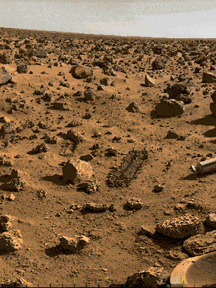
In spite of the fact that Mars has an atmosphere, the environment of Mars seems unfriendly toward life as we know it on earth. Mars is small, so there is not much gravity. For this reason, much of the
...more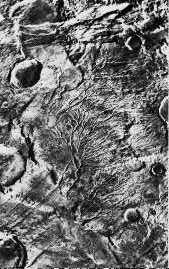
There is plenty of evidence for running water on Mars. But this evidence suggests that the nature of flowing water on Mars is nothing like it's terrestrial analog. The evidence is in the form of: large,
...more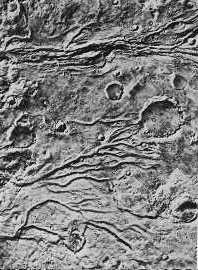
Unlike the Martian outflow channels, these Martian river valleys exhibit many tributaries. These river valleys do not resemble their terrestrial counterparts either, however. The tributaries are very short,
...more
The North and South Poles on Mars are similar to the polar regions on Earth in many ways. They are the coldest places on the planet, with wintertime temperatures dipping to a frigid -150° C (about -238°
...more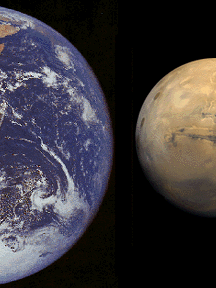
The terrestrial planets formed by accretion of rocky material and volatiles out of the primitive solar nebula. As they finished forming, about 4 Billion Years ago, the surface continued to be bombarded
...more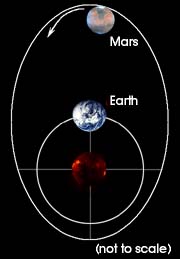
This drawing illustrates the large excursions in standard distance from the sun possible over the course of a Martian year. (The drawing slightly exaggerates the size scales). If conditions are just right,
...more
In the past few decades, the Russian and American space agencies have sent many spacecraft to Mars. Some have been a great success while others didn't even make it into space! In 1998, Japan also joined
...more














